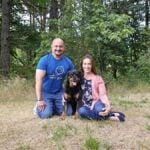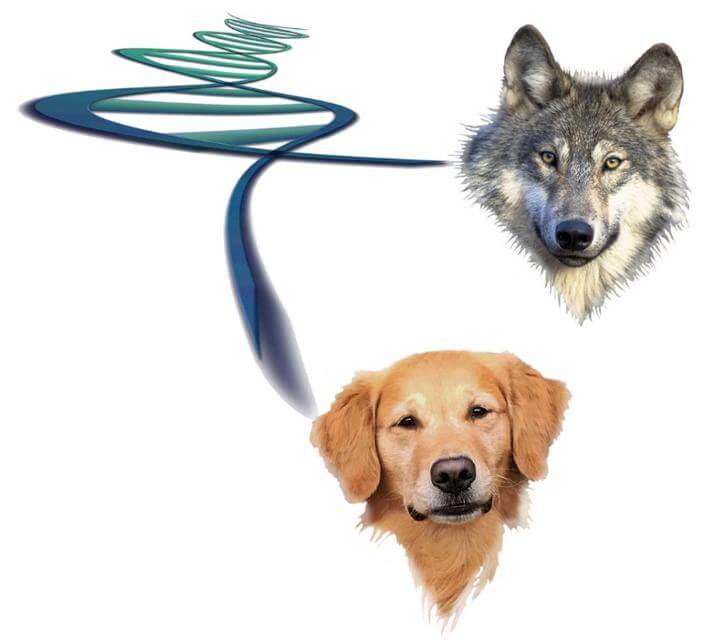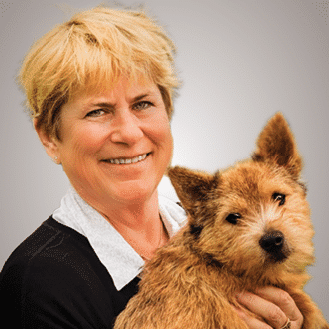


Home » Is Your Dog a Social Butterfly?

What makes a dog a dog—that gregarious canine companion? People have been asking this for a very long time. Why is it that when you raise wolves with human care and companionship from the time they are born, while they are more comfortable around humans than wolves not raised with people, they never really become man’s/woman’s best friend?
This symbiotic relationship between dogs and humans began tens of thousands of years ago, with dogs getting room and board in exchange for light work such as vermin control. How did it morph into dogs becoming members of our extended families and part of our workforce? The answer to this question would help us better understand the nature of the human-canine bond and might hold the key to the process of domestication itself. Check it out!
For decades, researchers believed that wolves with better social skills were gradually selected to live with humans and eventually became what we know as dogs. In that model, the difference between dogs and wolves is that dogs have greater behavioral plasticity. However, recent data suggests that wolves raised with and by humans can behave in a similar manner to dogs in social situations, meaning they may be more socially flexible than previously believed.
Recently, a group of scientists at Princeton and the National Institutes of Health decided to take a genetic approach to understanding the domestication of dogs. To do so, they compared the genomes of groups of animals with widely different characteristics—in this case, social behavior.
They first surveyed the entire genomes of 701 dogs from 85 breeds and genomes of 92 grey wolves. This analysis revealed an area on chromosome 6 that was quite different between dogs and wolves. Interestingly, mutation of the genes in this region in humans is associated with a congenital disease called Williams-Beuren Syndrome (WBS) that is characterized by hypersociability. Affected people have an outgoing personality and interact readily with strangers without filter or restraint, like many dogs (think wet Golden Retrievers). The researchers recognized that a major difference between dogs and wolves is the exaggerated gregariousness of dogs and their increased propensity to initiate social contact, even with a different species. They began to think they were on to something!
Now the researchers needed to see whether those genetic differences between dogs and wolves corresponded with differences in social behavior. So, they used a well-validated test of social behavior to compare domestic dogs (of several breeds) and captive, human-socialized wolves. The dogs or wolves were given two minutes to open a puzzle box containing summer sausage (yum!) in a room with a neutral stranger present. They recorded the percentage of time that was spent looking to the human for help solving the puzzle. Not surprisingly, dogs spent significantly more time than wolves looking to the human for assistance, a trait that they referred to as hypersociability.

Interestingly (but not surprisingly), the study also showed that dog breeds vary in the amount to which they look to humans. Some breeds were more likely to ask a human for help, while others worked more independently (see table). Yes, there’s a dog for everyone!
Wolves (from North America, Europe, the Middle East, and China) were much less likely to look to the human for assistance than were the dogs. That was true even for wolves that were raised by people, thus taking the “nurture” component out of the equation.
Now that the researchers had their behavioral test, they examined whether this behavioral characteristic correlated with genetic changes in that area of the canine genome on chromosome 6 that correlated with hypersociability in humans. And the long and short of it is, they did correlate.
It turns out that the more hypersocial the dog was, the more their genes in that area of chromosome 6 were disrupted, or inactive. The disruptions appeared to be caused by jumping genes (aka transposable elements), sneaky little pieces of DNA that jump from one area of DNA to another. When that happens, the genes that are interrupted are unable to produce the protein they were designed to. The more of these jumping genes that were inserted in that area of chromosome 6, the greater percentage of time the dogs looked to humans for help solving the puzzle.
We don’t yet know the exact functions of the genes in that area of the chromosome, and how they might relate to sociability in dogs. But there are hints. For example, one of the genes produces a protein that controls social context-related salivary oxytocin levels in humans. We know that oxytocin is released in both dogs and humans when they interact, so this might be one way in which the genes in this area modulate the human-animal bond.
As I was writing this article, I was attending a Nosework trial with my inexperienced Norwich Terrier, Helix. On the vehicle search, he ran up to the car and bounced his front feet up onto a wheel, sniffed it, and looked at me expectantly. I called it as an “alert,”—a signal from the dog to the handler that the hide was found—but guess what? He was just demonstrating hypersociability by looking to me for help. What a timely example! So, I just made a mental note to study his body language better, felt the oxytocin flowing through my body, and told him he was a good boy. After all, he can’t help it! It’s genetic!
